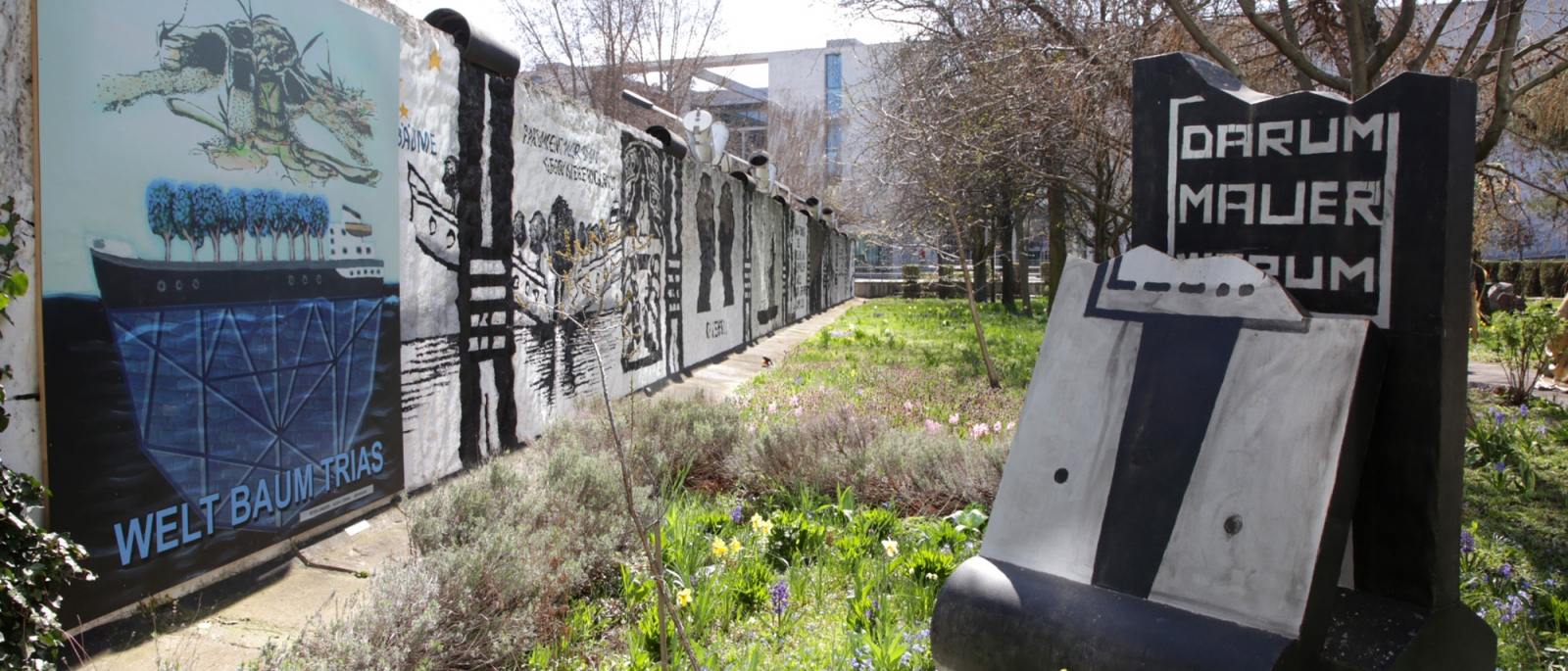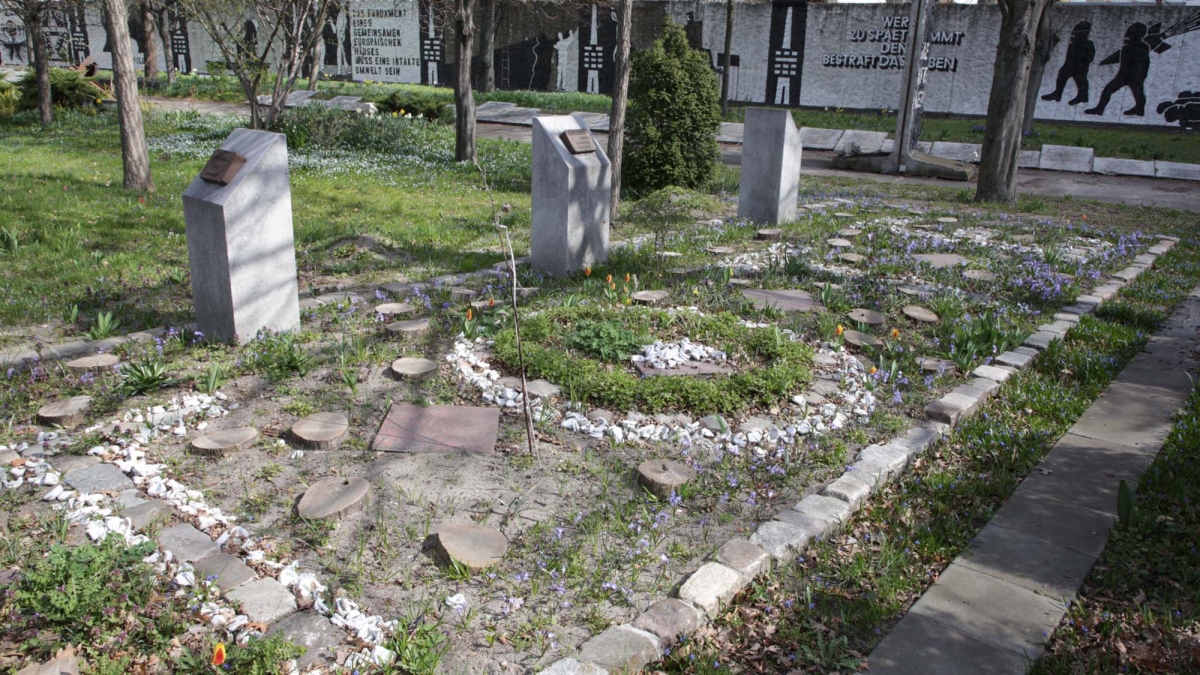Nature & Remembrance

The Parliament of Trees in April 2021 © Berlin Wall Foundation, Photo: Jürgen Hohmuth
The Parliament of Trees against War and Violence, covering nearly 2,850 square meters in the middle of Berlin's government quarter, is both a memorial to the victims of the Berlin Wall and a monument against war and violence. It was first created by nature and art activist Ben Wagin (1930-2021) in 1990 and has been redesigned several times since then.

The Parliament of Trees in April 2021 © Berlin Wall Foundation, Photo: Jürgen Hohmuth
Ben Wagin first created this open-air monument in the year of German reunification. He placed original Berlin Wall segments on the grounds, which at the time were much larger. The collection of sixteen trees planted by the then prime ministers of the old and new federal states forms the centerpiece of the memorial. The trees are accompanied by murals, wall art, sculpture garden elements as well as by performance art, memorial stones, flowerbeds, areas resembling grave fields, artistic interventions, pictures and texts.
The names of 258 victims of the border regime are inscribed on granite slabs. This number was based on information available at the time, but no longer represents the official number of known victims. Scholarly research has determined that at least 140 people died as a result of the Berlin Wall.
As a message of peaceful coexistence, in 1979 Wagin began planting trees in West Berlin at places where the Wall had blocked streets. Ginkgo trees are included in the Parliament of Trees as symbols of hope. In this way, Wagin also calls into question the traditional idea of a monument.
In addition to focusing on the history of the Wall and division, the Parliament of Trees against War and Violence also commemorates the death of thousands of World War II soldiers, in particular Soviet soldiers who were shot by an Schutzstaffel unit while storming the Reichstag on April 20, 1945.